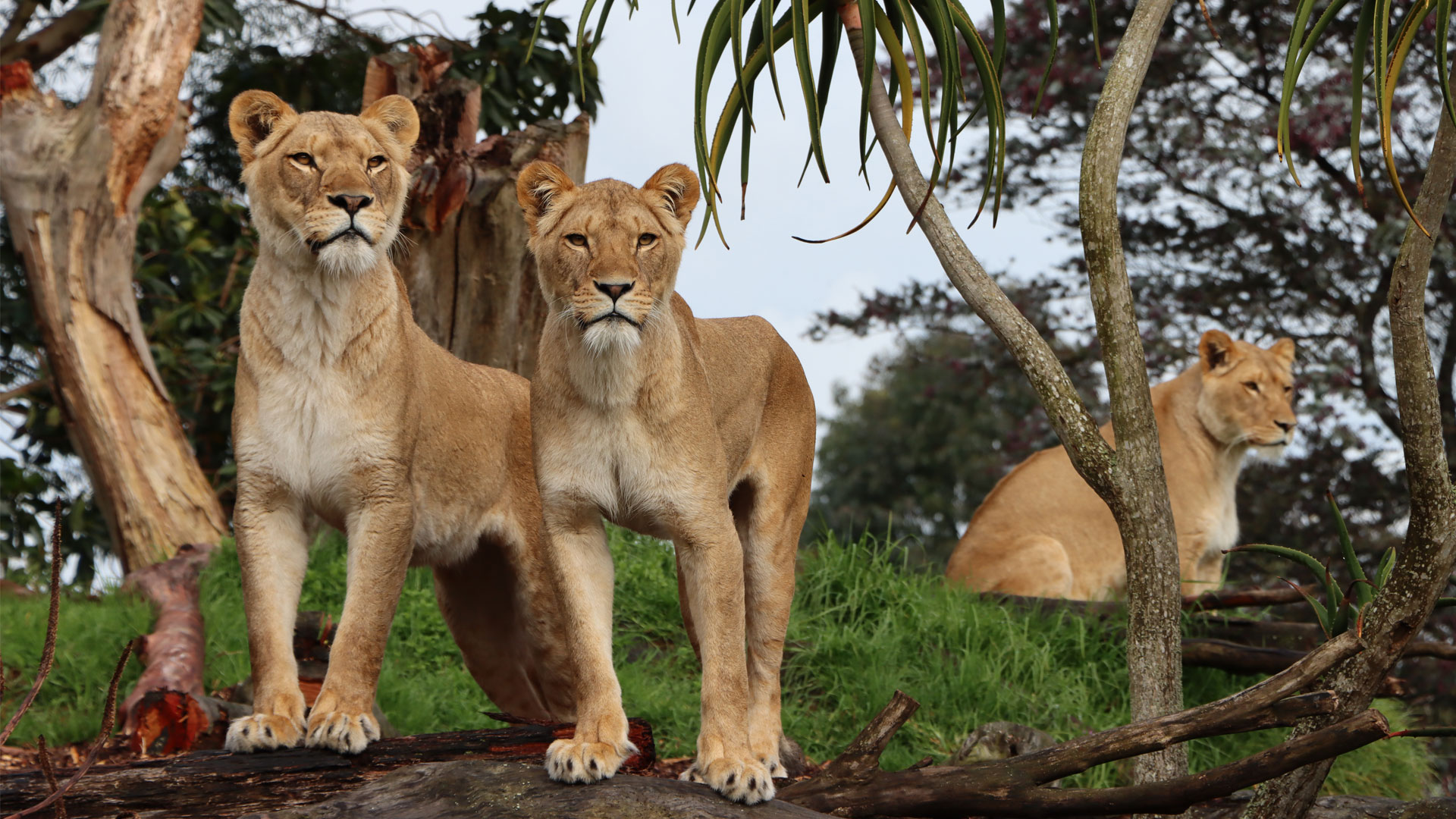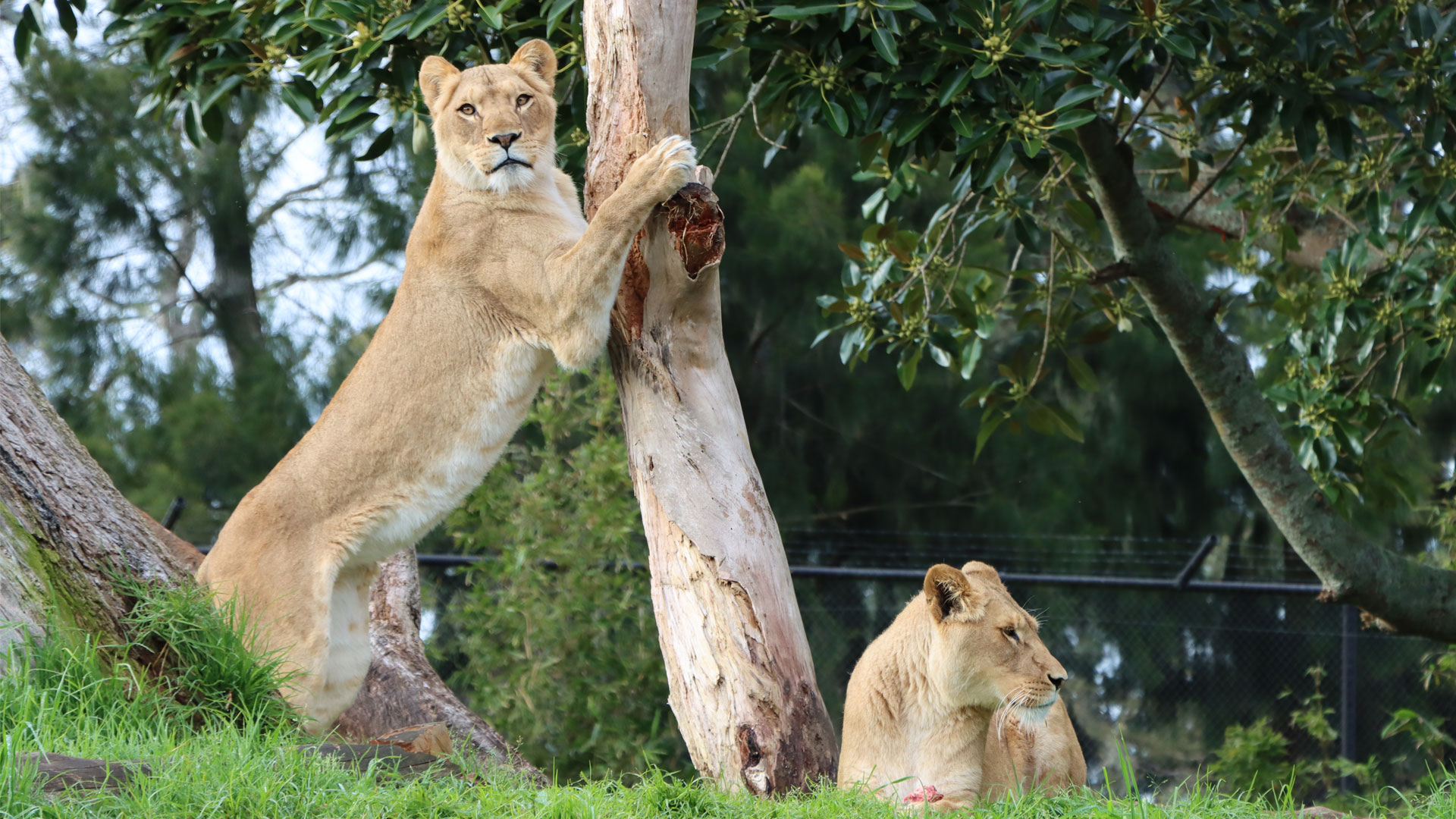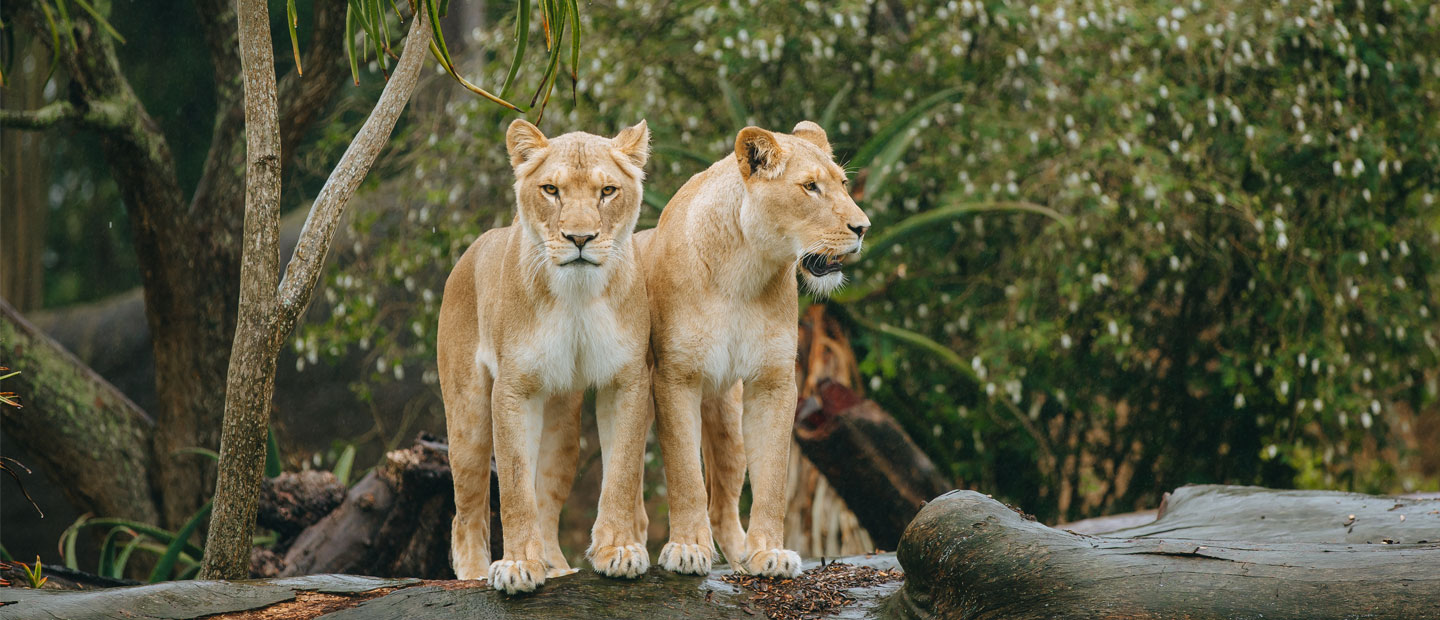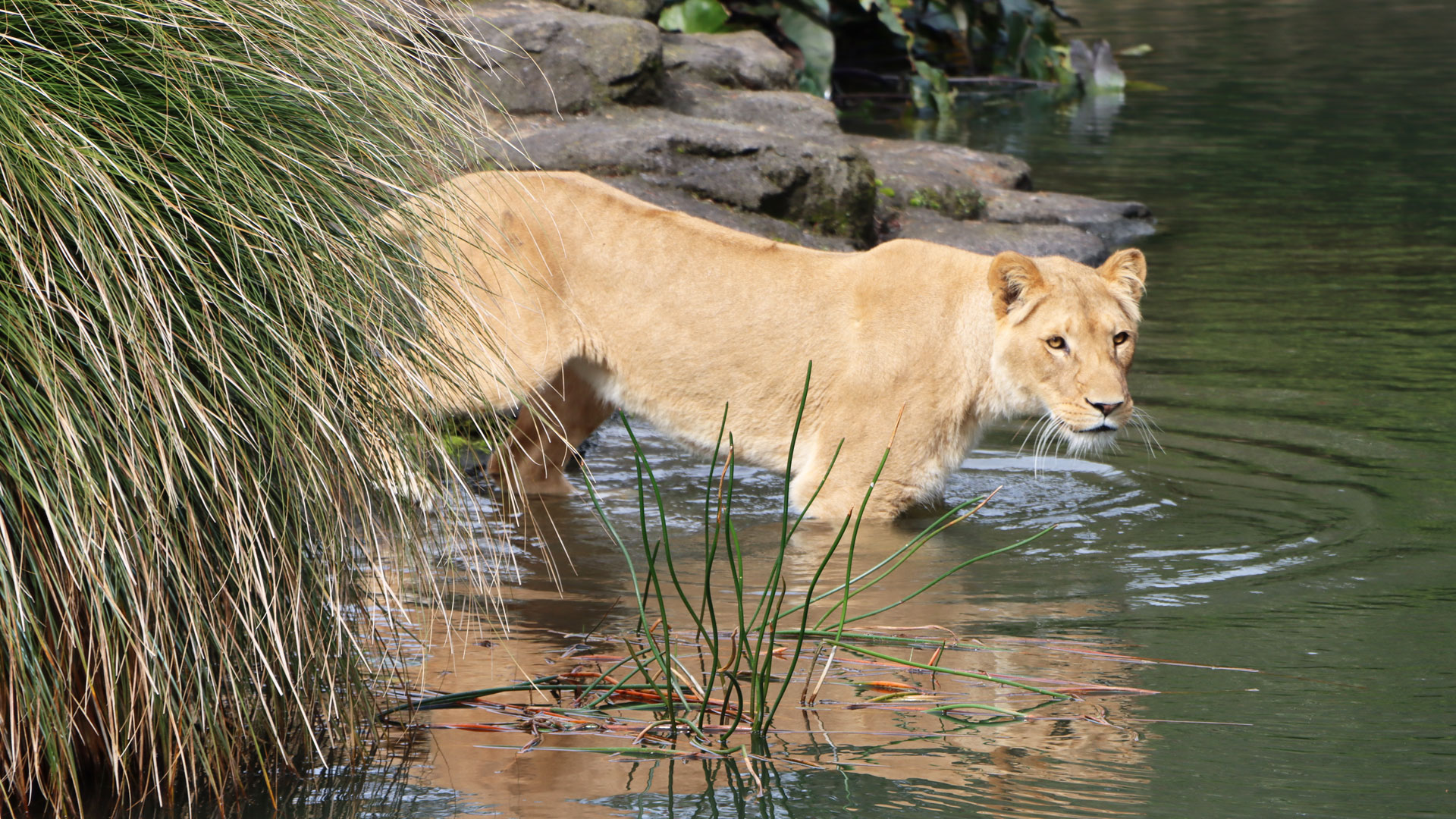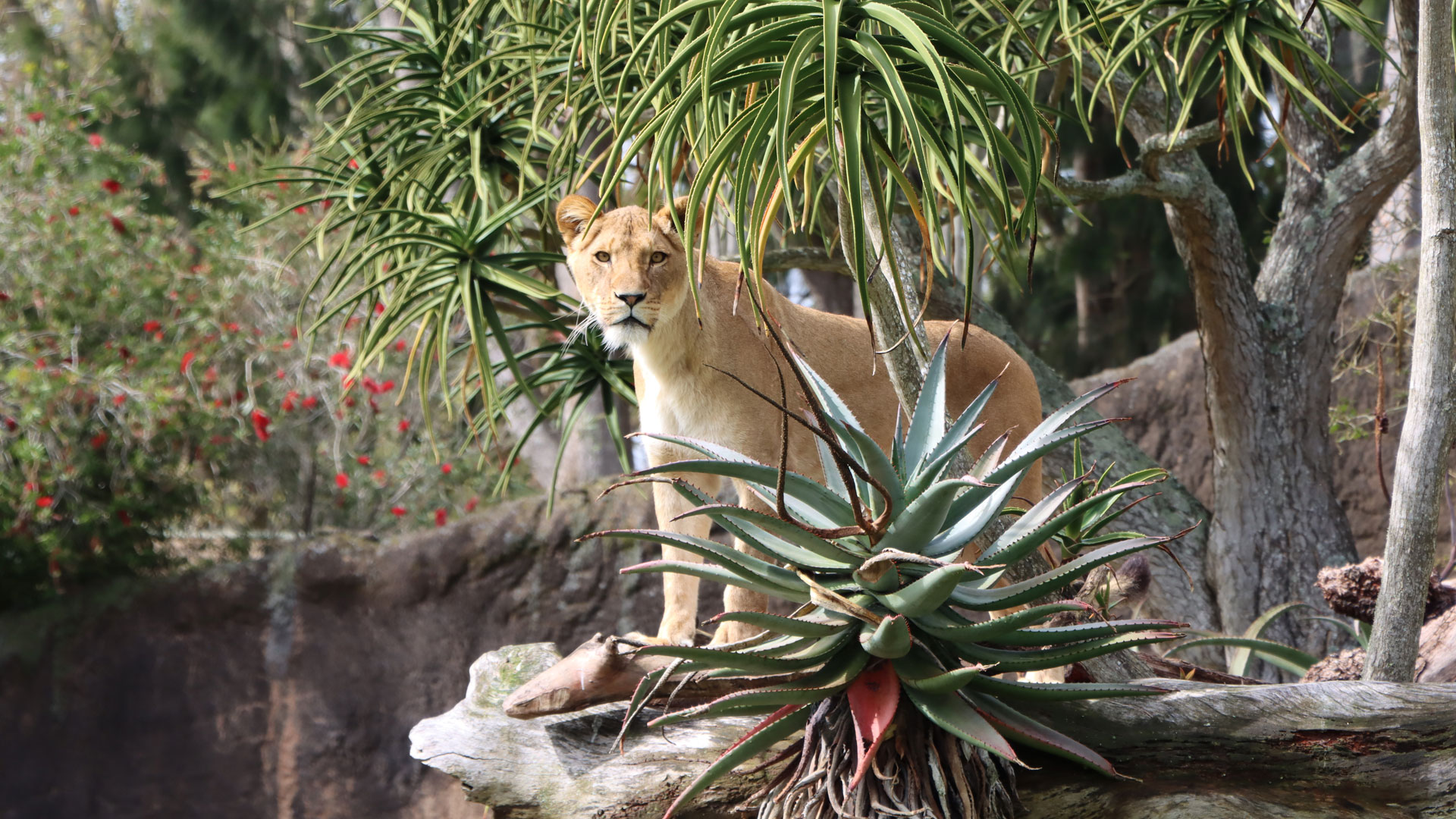The pride of Auckland
Lions live in a pride (group), and just like your family, everyone has their role to play. Male lions defend the pride’s territory. Their mane protects their neck from attack and helps them to look bigger. However, having a mane is like wearing a scarf all summer. It can get pretty hot! So it’s the females that will hunt in search of the pride’s next meal.
Females tend to hunt together, working as a team to flush out and ambush prey. These apex predators truly mean business, with powerful chest muscles that allow them to hold down an animal up to three times their size! Their powerful hind limbs enable them to leap up to 10 metres in a single jump and they can get up to 60km/h at top speed. Once a prey animal is caught, the males will have first pick of the takings - hence the saying ‘a lion's share.’
The lion sleeps tonight…
Resting up to 20 hours a day, lions are most active in the evenings. This is because in their wild home of Africa, sometimes it’s just too hot to do much during the day! With excellent hearing and night vision, lions are well equipped to hunt at night. Look closely (but not to close!) just under a lion’s eyes and you’ll notice a white patch of fur. This helps to reflect any available light straight into their eyes to help them to see better. Their large pupils also help to reflect the moonlight. Because of this, it is thought that a lion’s eyesight is about eight times better than that of humans!


